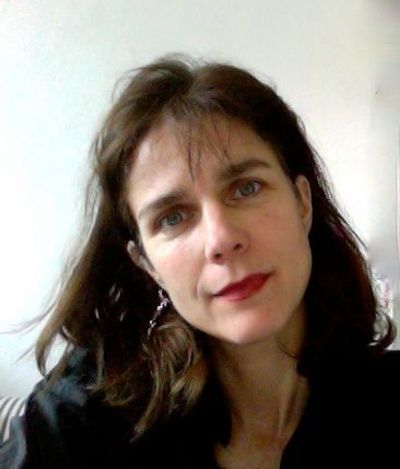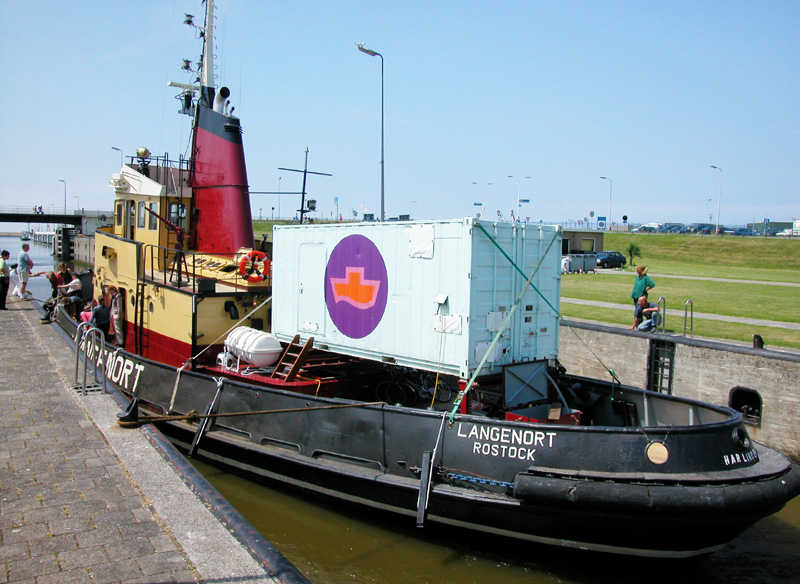Women on Waves – Abortion right as an expression of gender justice
By Milena
Rampoldi, ProMosaik. Here in the following my interview with Women on Waves, struggling
for the access and right to abortion for women around the world. For Women on
Waves, abortion is a right expressing gender justice in society. I spoke to Rebecca Gomperts, the founder and asked her about the reasons why she struggles for abortion rights and about the campaign of Women on Waves.
Rampoldi, ProMosaik. Here in the following my interview with Women on Waves, struggling
for the access and right to abortion for women around the world. For Women on
Waves, abortion is a right expressing gender justice in society. I spoke to Rebecca Gomperts, the founder and asked her about the reasons why she struggles for abortion rights and about the campaign of Women on Waves.
 |
| Rebecca Gomperts |
Why the name
Women on Waves?
It is a name with many meanings, Women will take every wave
to get access to an abortion, the ship is on the waves, we want to make waves
in order to change the reality and make abortion safe and available everywhere
around the world
to get access to an abortion, the ship is on the waves, we want to make waves
in order to change the reality and make abortion safe and available everywhere
around the world
What does feminism mean to you?
That women also have the human right to bodily autonomy, to
health,to privacy, to wellbeing, to equality.
health,to privacy, to wellbeing, to equality.
us about your campaigns for abortion.
Women on Waves envisions a world where all women can decide about their
bodies and lives and can access sexual health services/information including
safe abortion services no matter where they live or what is their social
economic status. The impact of an unwanted pregnancy on the lives of women and
girls is profound. Worldwide 43 million women have an abortion every year. In countries
where abortion is illegal 21 million women resort to illegal abortions as a result of which 47.000
women die every year. Abortion is fundamentally about social and gender justice. Women and
girls with money and access to information will always be able to pay for a
safe illegal abortion with a doctor or travel to another country, only those
without financial resources an access to information are effected by
restrictive abortion laws. Therefore we have to continue working on trying to
break the taboo around abortions and legalize abortions and at in the mean time
make sure women have access to contraceptives and safe medical abortions. Our main expertise is finding legal loopholes and use
these to develop innovative activities and campaigns that can make most impact.
We circumvent and challenge restrictive abortion laws, break the taboo
surrounding abortion and create awareness about the availability of abortion
pills and create access to safe abortions by:
bodies and lives and can access sexual health services/information including
safe abortion services no matter where they live or what is their social
economic status. The impact of an unwanted pregnancy on the lives of women and
girls is profound. Worldwide 43 million women have an abortion every year. In countries
where abortion is illegal 21 million women resort to illegal abortions as a result of which 47.000
women die every year. Abortion is fundamentally about social and gender justice. Women and
girls with money and access to information will always be able to pay for a
safe illegal abortion with a doctor or travel to another country, only those
without financial resources an access to information are effected by
restrictive abortion laws. Therefore we have to continue working on trying to
break the taboo around abortions and legalize abortions and at in the mean time
make sure women have access to contraceptives and safe medical abortions. Our main expertise is finding legal loopholes and use
these to develop innovative activities and campaigns that can make most impact.
We circumvent and challenge restrictive abortion laws, break the taboo
surrounding abortion and create awareness about the availability of abortion
pills and create access to safe abortions by:
– Abortion ships (Ireland
2001, Poland 2003, Portugal 2004, Spain 2008, Morocco 2012),
2001, Poland 2003, Portugal 2004, Spain 2008, Morocco 2012),
– Safe abortion hotlines and
trainings of local women’s organisations (in 2008 we provided technical support
for woman’s groups in Ecuador to run a safe abortion hotline, since than we
trained groups in Peru 2009, Chile 2009, Argentina 2009, Venezuela 2011,
Indonesia 2011, Pakistan 2010, Kenya 2012, Tanzania, Malawi, Uganda etc),
trainings of local women’s organisations (in 2008 we provided technical support
for woman’s groups in Ecuador to run a safe abortion hotline, since than we
trained groups in Peru 2009, Chile 2009, Argentina 2009, Venezuela 2011,
Indonesia 2011, Pakistan 2010, Kenya 2012, Tanzania, Malawi, Uganda etc),
– Telemedicine (Women on Web
was founded 10 years ago. The service is available in 16 languages and answers
10.000 emails from women all over the world per month. It has supported hundreds
of thousands of women with information and access to safe medical abortion and
is now a selfsustainable)
was founded 10 years ago. The service is available in 16 languages and answers
10.000 emails from women all over the world per month. It has supported hundreds
of thousands of women with information and access to safe medical abortion and
is now a selfsustainable)
– Scientific research (into
the outcomes of women who used women on web service, first publication 2008)
the outcomes of women who used women on web service, first publication 2008)
– Safe abortion app (2015)
– Abortion drone flying
abortion pills from Germany to Poland (2015) and Ireland (2016)
abortion pills from Germany to Poland (2015) and Ireland (2016)
– Strategic litigation (we
won all court cases against the Dutch and Portuguese Government and ECHR)
won all court cases against the Dutch and Portuguese Government and ECHR)

Abortion
pills, how to explain them to people who say “NO”?
pills, how to explain them to people who say “NO”?
The medicines to do a medical abortion are on the list
of essential medicines of the World Health Organization (WHO). Mifepristone and
Misoprostol can be used by women themselves to save their lives.
of essential medicines of the World Health Organization (WHO). Mifepristone and
Misoprostol can be used by women themselves to save their lives.
Risks of medical abortion in perspective:
Mortality unsafe abortion is 1 : 450
Mortality of an early medical abortion is < 1 : 500.000
Mortality of giving birth in Europe 1 : 20.000
Estimated road traffic death rate in Europe 1 : 25.000
It is
safer to use than viagra or penecilline.
safer to use than viagra or penecilline.
How
different are laws about abortion in Europe and why?
different are laws about abortion in Europe and why?
This is the map of the different abortion laws http://worldabortionlaws.com/
abortion was illegal almost everywhere from the middle of
the 19 th century, each country has followed their own process to legalise
abortion after women won the right to vote (this also differs per country when
and how)
the 19 th century, each country has followed their own process to legalise
abortion after women won the right to vote (this also differs per country when
and how)
How can
women influence the political discourse about abortion?
women influence the political discourse about abortion?
By breaking the taboo and silence.
Abortion is the most preformed medical intervention in the
world. As long as women remain silent and allow to be shamed, states will keep
abortion restricted and illegal.
world. As long as women remain silent and allow to be shamed, states will keep
abortion restricted and illegal.


